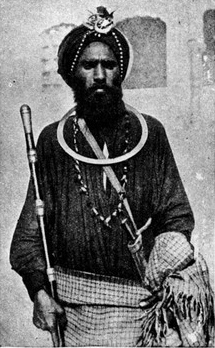
Kabul, Aug 24 (IANS) — “We are thankful to the Hamid Karzai government for giving us all assistance in reclaiming the damaged gurdwaras in Kabul and getting them freed from encroachers,” says Ravinder Singh, president of the Gurdwara Singh Sabha.
“It is a huge task to get back these historic gurdwaras,” Singh told IANS, reflecting the happiness of the 4,000 strong Sikh and Hindu residents here.
Kabul boasted of eight towering gurdwaras and three Hindu temples before the mujahideen groups opposed to President Najibullah began to target Kabul from the outlying districts.
Seven of the gurdwaras were destroyed in the fighting in the 1980s. Hindu temples, however, escaped damage.
Only one gurdwara at Karte Parwan, associated with Guru Nanak, the founder of Sikhism, survived and remained operational.
All other gurdwaras were located in Shor Bazar, once the hub of cloth and dry fruit trade which was mostly in the hands of Sikhs and Hindus.
The Khalsa School, which once had over a thousand students, is now in ruins.
The hugeness and solid building material of the gurdwara structures proved to be their undoing because different groups turned them into bunkers.
Amid the numerous mud houses, the gurdwaras were the only concrete structures with large basements that were meant for langar (free meals) and car parking. One of the basements is so large that it can accommodate over 200 cars.
During the war for Kabul’s control, Ahmad Shah Massoud, the legendary commander of the Afghan resistance, entrenched himself in the gurdwaras with the basements serving as bunkers while Uzbek warlord Abdur Rashid Dostum was shelling from the higher elevation of the fort Bala Hissar. Massoud won the battle but the gurdwaras lost.
The Hindu-Sikh population migrated during the fighting, and the Taliban rule further worsened the situation. The militia encouraged the encroachers to occupy the abandoned gurdwaras.
With the return of the community after the Taliban’s rout, all seven gurdwaras have been reclaimed by the Guru Singh Sabha and their restoration work has been undertaken.
Ravinder Singh is bitter. He said the Shiromani Gurdwara Prabandhak Committee (SGPC) in Amritsar has not cared to respond to the requests of the Sikh community in Kabul to assist them in rebuilding the gurdwaras.
Although their numbers have dwindled significantly from 10,000 in the eighties to 4,000, there is a mood of palpable pride and renewed sense of brotherhood among the Hindu and Sikh residents here.
Most of them belong to the Khatri trading community and inter-marriages among them are very common. On Fridays (a holiday here), they collect in the Karte Parwan Gurdwara and after the morning prayers go to the Baba Har shri Nath Mandir in Mandai (Main Kabul Market) and participate in kirtan and langar.
“There are not enough devotees to sustain even the upkeep of the small dharamsala which is made operational. But with the blessings of the Baba we will bring back the lost glory,” says Karam Chand the granthi at the Baba Sri Chand Dharamsal in Shor Bazar.
Hindus and Sikhs maintain good relations with Muslims and are addressed as “Lala”, which in Dari and Pushtu languages means elder brother.
Many Afghans consider Hindus and Sikhs as their elder brothers because the forefathers of many of them were Hindus before they converted to Islam around the 7th century.
Under the new constitution, though Afghanistan has been named the Islamic Republic of Afghanistan, it ensures due representation to Hindus and Sikhs and guarantees their religious rights.
The Loya Jirga, which drafted the new constitution last year, had five Hindu-Sikh members, including a woman. The nine-member Election Commission, constituted to conduct the parliamentary elections next month, has a Sikh representative.
All this has given confidence to the community and they are re-establishing their trade and business in Kabul as well as in Kandahar, Ghazni and Jalalabad. But they are still waiting to shift their families from India, the US and Europe where they fled during the Taliban regime.
© 2005 IANS India Private Limited, New Delhi. Posted on Religioscope with permission. — Indo-Asian News Service (IANS) is India’s first multinational and multilingual wire service. Website: www.ians.in. Subscription enquiries: contact IANS (mention Religioscope).